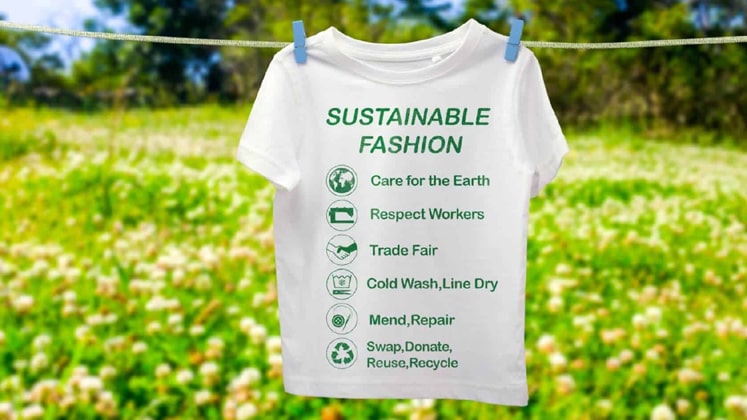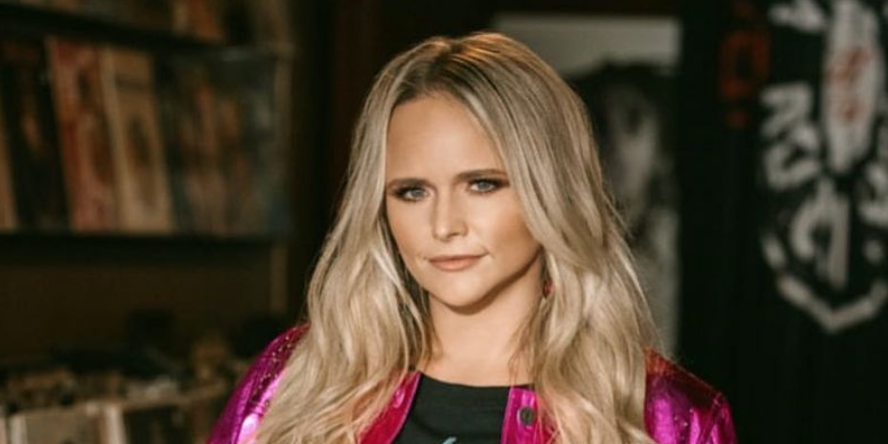[ad_1]
Recently, H&M was heavily criticised for its ‘false’ claims that more than half of its products are sustainable but they were actually not. The brand was also sued and dragged to the court for its ‘greenwashing’ attempt as they allegedly manipulated Higg Index. Then there is Shein which is facing worldwide backlash for its unethical practices in the supply chain, yet it earns more revenues than what H&M and Zara collectively earn in the USA!
As horrific as it seems, other brands too are accused of talking something they don’t practice and yet they manifest sustainable fashion in various ways – outright deception, subtle marketing and often as ambitious claims without full transparency around the actual impacts! In its July 2021 report, the not-for-profit Changing Markets Foundation highlighted that as many as 59 per cent of all green claims by European and UK fashion brands are misleading and could be greenwashing.
Greenwashing is in its prime – all thanks to brands’ (hence consumers’) love for fast fashion and synthetics!
Fast fashion, arguably, is the biggest culprit that’s hurting fashion’s sustainability efforts. There is a portion of end consumers who think that their purchasing decisions do not matter, that their product consumption does not make a difference.
But in reality, trend-driven overconsumption is motivated by low price/cheap products that are poorly constructed (more than likely breaching ethical manufacturing standards) to meet tight costing. These garments, almost certainly lasting less than a season, end up in landfill or are shipped offshore to emerging markets and developing economies where they are discarded as environmental pollution. As a last-ditch effort to appease a new generation of conscious consumers, brands greenwash their ‘footprint’ in their attempt to market the product or the brand.
The consequences of the brand’s supply chains are far-reaching and long-lasting as they often use man-made materials and chemicals. The CEH, a non-profit consumer advocacy group, focused on exposing the presence of toxic chemicals in consumer products, recently did testing on a variety of popular branded sports bras and athleticwear that revealed high levels of BPA, a chemical compound that’s used to make certain types of plastic and can lead to harmful health effects such as asthma, cardiovascular disease and obesity.
The sports bras sold by brands like Athlete, PINK, Asics, The North Face, Brooks, All in Motion, Nike and FILA were all tested for BPA in the past six months, and the results showed the clothing could expose wearers to up to 22 times the safe limit of BPA, based on standards set in California, according to the Center for Environmental Health.
As per CNN Business, under California law — specifically, Proposition 65 enacted in 1986 — the maximum allowable dose level for BPA via skin exposure is 3 micrograms per day. The group also tested athletic shirts from brands that included The North Face, Brooks, Mizuno, Athlete, New Balance and reeboks and found similar results.
How brands stand out in different reports on sustainability front?
In the recent Remake Fashion Accountability Report 2022Remake – a global advocacy organisation fighting for fair pay and climate justice in the clothing industry – reviewed 58 big fashion companies in 2022 including Chanel, J.Crew and Allbirds on their journey to intersectional social and environmental sustainability and unpacked its key findings and that indicates towards an alarming situation, though some positives are there too!
- Bold promises on climate change, but progress has been limited
Only three companies (5 per cent) – Burberry, Everlane and H&M Group – met all four of Remake’s climate criteria: disclosure of full emissions; short-term 1.5℃ pathway-aligned Science Based Targets; ambitious long-term net-zero targets; and a reduction in their total greenhouse gas emissions. As companies reveal their full supply chain emissions, the scale of the problem is clear: Inditex (Zara’s) annual emissions are equivalent, for example, to consuming 39 million barrels of oil. - The myth of circularity has been exposed but no company has truly embraced degrowth. A third of the assessed companies are reducing their packaging waste and 20 per cent now offer upcycling or repair services. Despite a rise in resale platforms and some repair initiatives, there has not been a transition away from linear production. The companies continue to co-opt for customer interest in circularity – like Shein’s new resale platform – to greenwash. While no company can show an overall reduction in production, some companies like Everlane, Nike and Patagonia did reduce their use of virgin plastics like polyester.
- Living wages remain elusive, yet some companies are taking more responsibility for the wages of their workers. Fashion is built on poverty pay, and that hasn’t changed this year. That said, a few companies can demonstrate that some of their workers are earning fair pay, and the infrastructure to raise wages is becoming more robust.
- Four companies (7 per cent) published some progress towards a living wage in their supply chains in addition to disclosing the methodology they use to quantify a living wage: Hanesbrands Inc., Patagonia, Ralph Lauren and Reformation.
- Five companies (9 per cent) — Burberry, Kering (Gucci, Balenciaga), Marks & Spencer, PUMA and Reformation — published partial information indicating that some of their direct employees, such as corporate employees or retail workers, earned a living wage.
- One company – Ganni – adopted a Buyer Code of Conduct, a type of contract for the purchase of goods that commits companies to do their part to uphold fair commercial practices, such as paying fair prices for goods in full, and on time.
Despite some progress, the number of fashion brands bringing transition in their supply chain remains just under 10 per cent.
Renay Wells, Fashion Impact Specialist from Australia told Apparel Resources that a lot of brands which claim to be sustainable consider the use of a ‘recycled’ fabrication as the only requirement to make the claim of sustainability. They do not often consider ramification and the impact of their supply chain. “Most brands would not give a second thought to the moral consequences of their production practices. The desire for profit, high margins and fast manufacturing far outweighs their claims of sustainability,” commented Renay.
Will the scenario change?
The fashion industry has been talking about negative impacts of fast fashion on the environment for a long time now but the consumption of fast fashion is only increasing with time. It’s true that most of the sustainable fashion products aren’t affordable and do not come as size-inclusive. In countries like Brazil and Mexico, for instance, a lot of people buy from Shein because they believe it is a way to being part of a certain fashion trend at cheap prices, and the brand really has inclusive sizes. Sustainable clothes are more expensive for obvious reasons, but there are really no excuses to not be size-inclusive.
Not just Shein – which is considered a serial offender of sustainability initiatives – many other renowned brands equally are responsible for increasing greenwashing attempts. It is highly important to inform consumers that fast fashion is impactful for the planet and causes massive environmental pollution!
Renay Wells also suggests calling out the brands paying their workers just few cents per garment that continue a cycle of social injustice and unethical business practices. This won’t stop until end consumers take sustainability seriously! And, that might not happen if fashion brands aren’t working as a cohesive force to educate end consumers across demographics on how bad the fast fashion products could prove to be for the planet!
Relove – an India-based sustainable and pre-loved fashion platform – has been putting in remarkable efforts to educate the end consumers through its Instagram page in a way that the message directly connects to the users. This is done by strong storytelling, bringing examples of renowned celebrities and influencers who use pre-loved fashion products with no guilt!
“Extending the life of clothing just by an extra nine months of active use would reduce carbon and water footprints by around 20-30 per cent each and cut resource cost by 20 per cent,” said Relove in one of its Instagram posts recently to educate customers, adding, “Brands and consumers can join hands in creating a more balanced world for fashion and help our planet heal.”
All brands need to realise they have to somehow balance things out between their ‘profit margins’ and ‘final retail prices’ for consumers, sustainable supply chain being a crucial aspect to be followed in between both.
Scapegoating Shein, H&M and a few others and turning them into the poster child for everything that’s wrong with the industry is not the solution. There are many other ultra-fast fashion brands now which are just as exploitative. Boycotting a few brands just makes space for 10 other similar brands such as Boohoo and Asos as long as consumers want cheap products.
Therefore, it’s time for consumers to also take some accountability. Shoppers need to express their ‘anti-fast fashion values’ with their money and governments need to counter so-called greenwashing with legislation that protect workers everywhere and prevent such practices from even taking place.
Now there may be an argument on – Why should the focus be on end consumers and why is changing them the key, rather than changing fashion brands, which are doing everything wrong in the name of profit?
There is one straight answer to this – it’s because the end goal of a brand is to sell its products in the consumer market and earn revenues. If supply chain is improved, sustainable measures are applied, transparency is created, innovations in product are done and proper wages are given to workers, then a brand needs to invest more which ultimately results in hike in product’s retail prices. Are consumers ready to pay this hiked price for a product?
If they are looking for cheap products, a brand, whose business model works on fast fashion concept, simply can’t go for all these above-mentioned measures to create a sustainable supply chain because it incurs huge cost. This is why changing consumers’ habits and their spending capacity on high-priced products is crucial as that will give space to more sustainable products in the market.
[ad_2]
Source link




